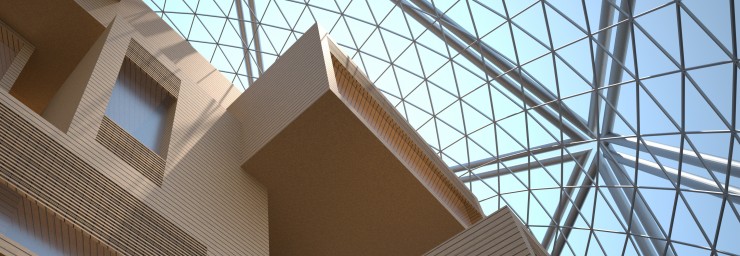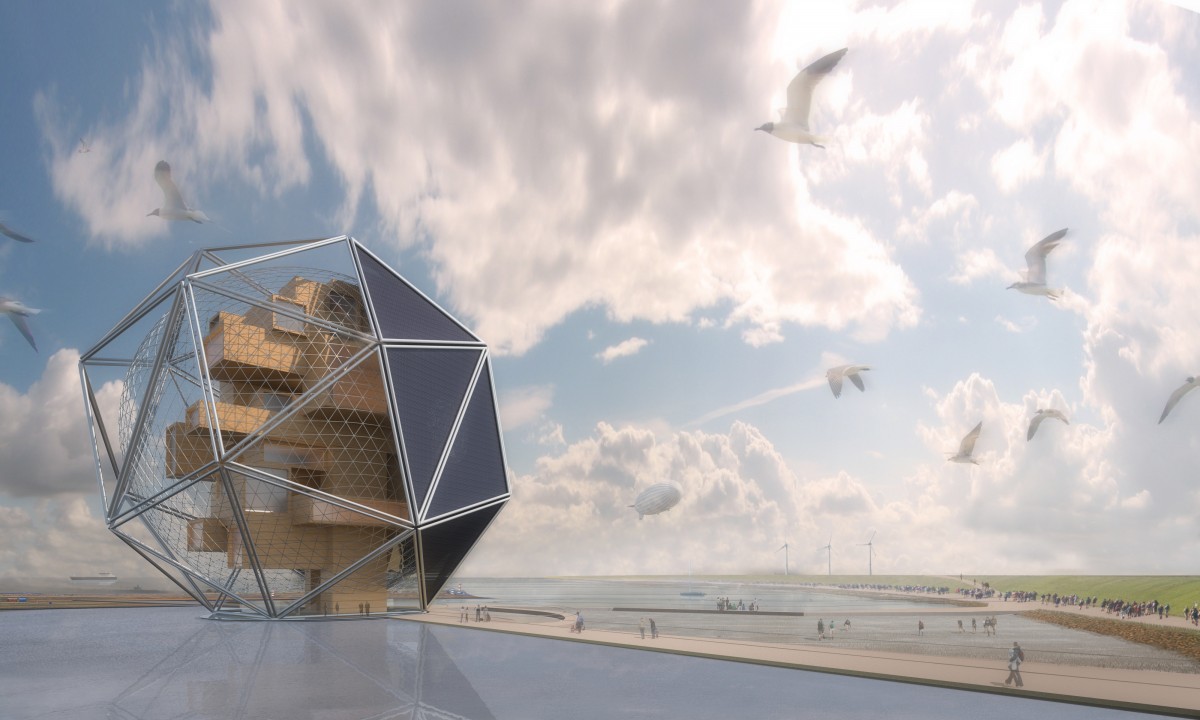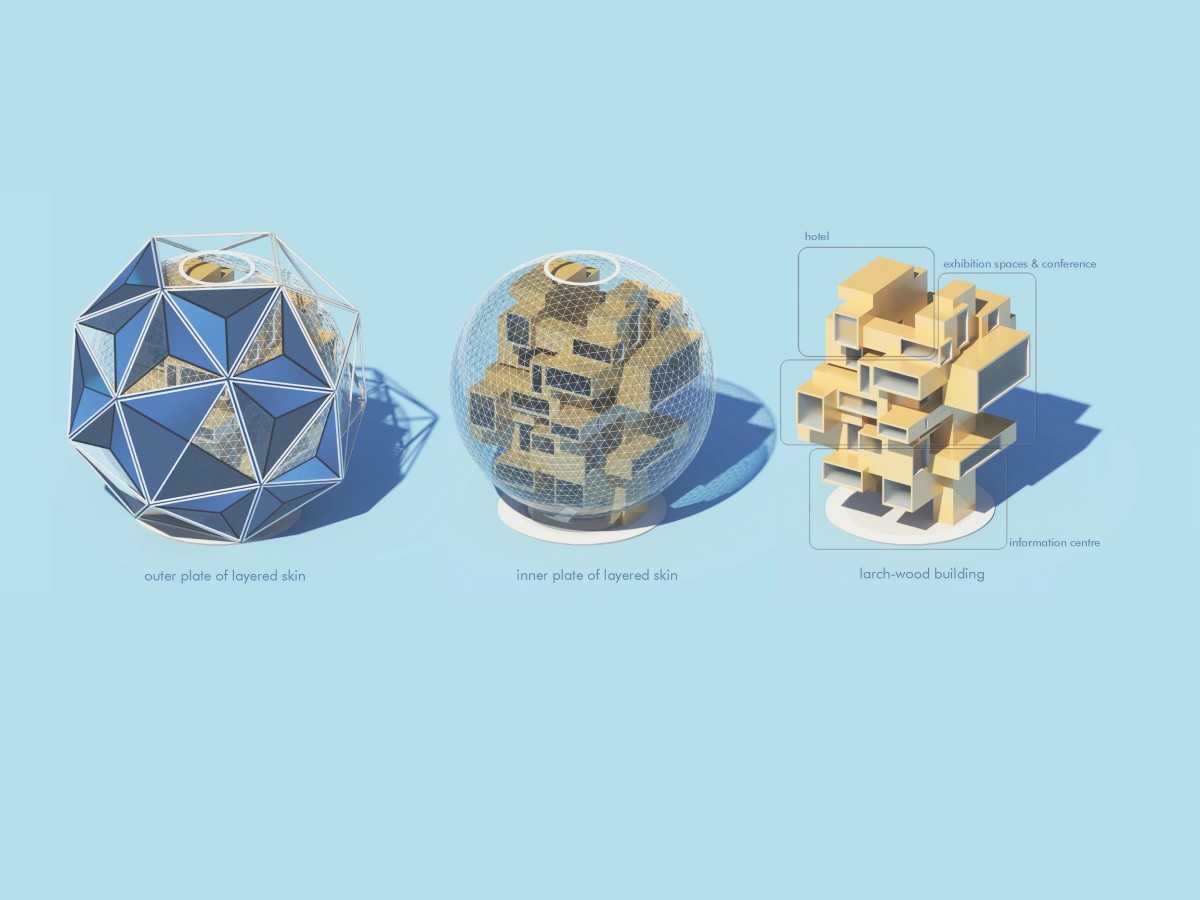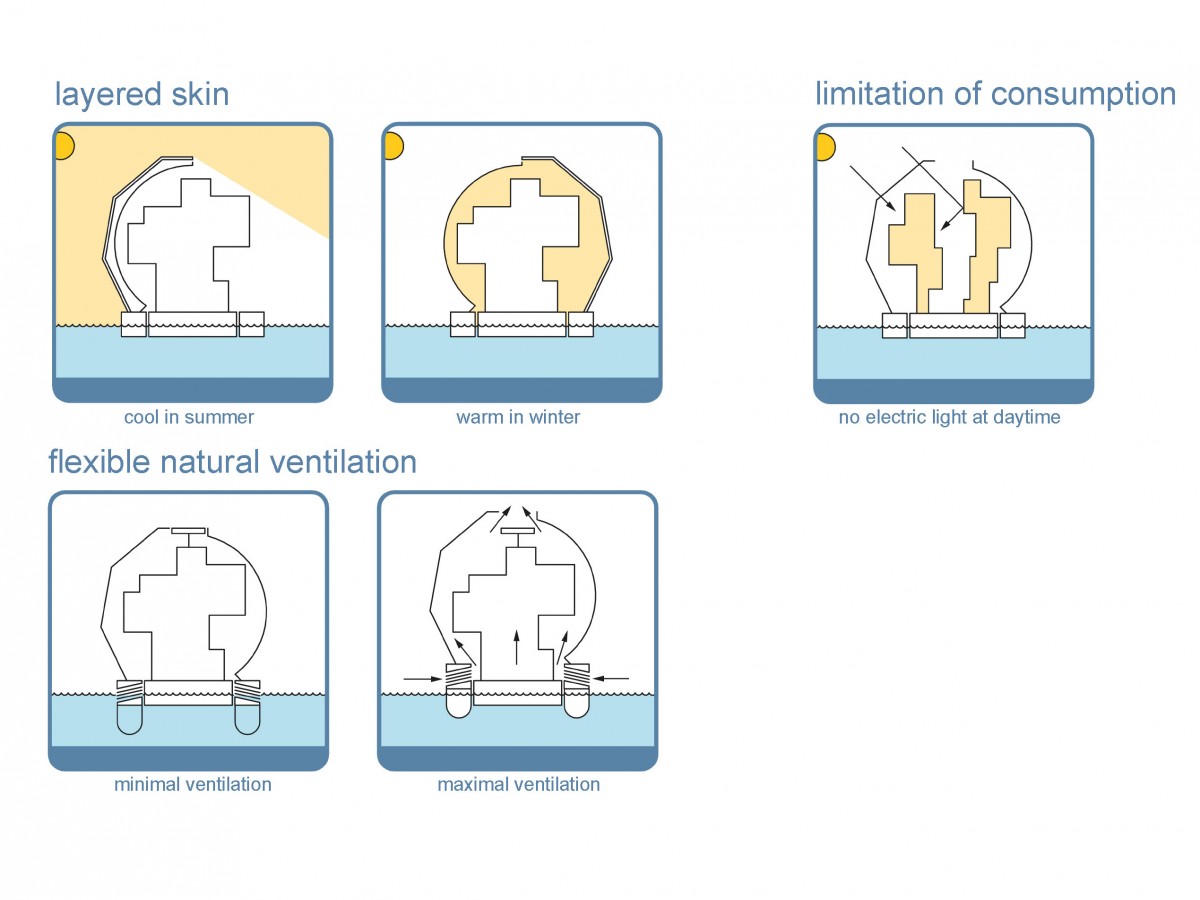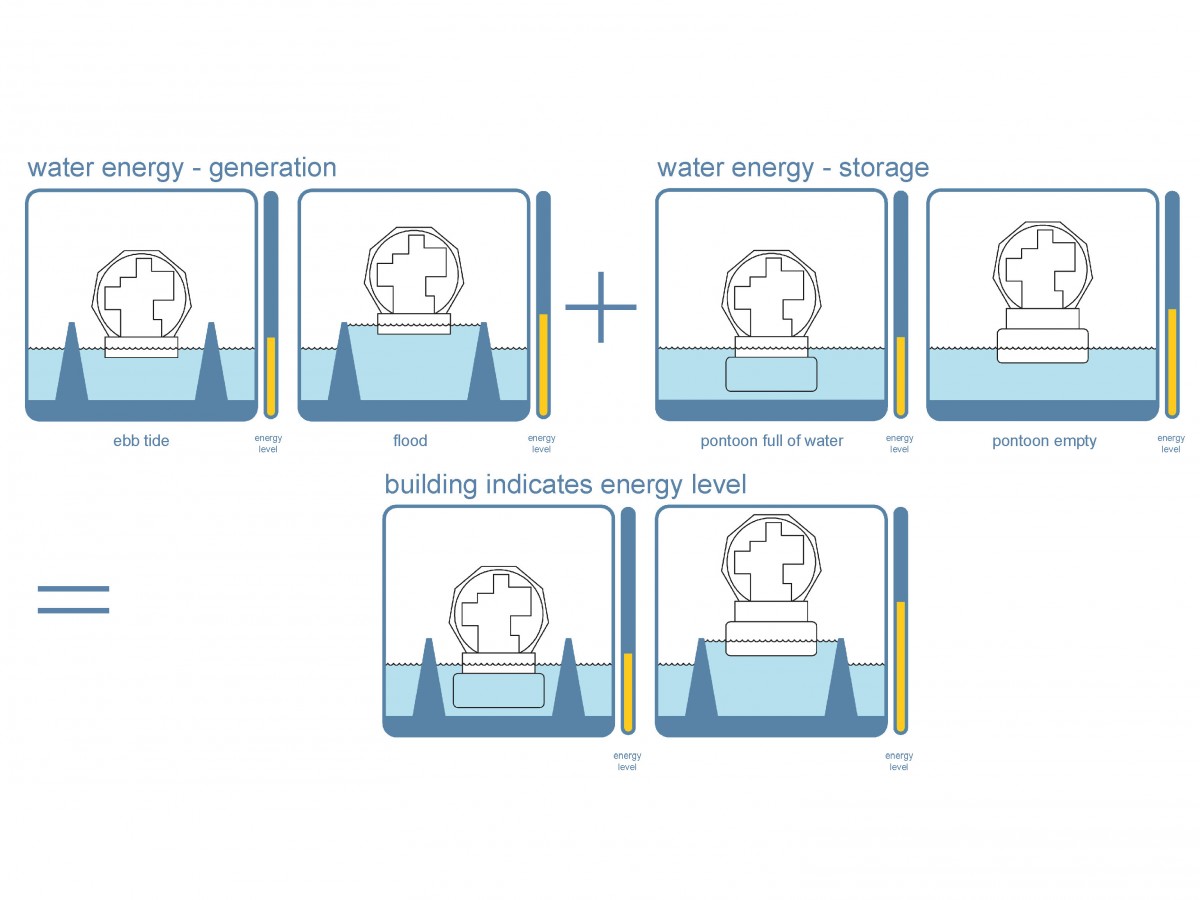The World Sustainability Centre is a multi-functional complex with exhibition spaces, a conference centre and a hotel. At the same time, the WSC functions as an information centre for the Wadden Sea UNESCO World Heritage Site. Group excursions by boat are organised from the building, bringing to life the Wadden Sea with its tides, sandbanks and sandbars. S-cube is situated approximately 200 metres from the edge of the Afsluitdijk. The building floats on the edge of a large basin formed by an existing longitudinal dike and a new dam. At high tide the building is completely surrounded by water, while at low tide a large part of the surrounding sandbank stands clear of the water. The floating WSC is able to withstand all weather conditions and will not be affected by the rise of sea level in the coming decades.
S-Cube is a building which is completely self-sufficient because of its extremely low energy requirements and its ability to generate and store sustainable energy. The building has a divisible and flexible external skin that, depending on the seasons and type of weather, creates optimal conditions for the total energy management and natural ventilation. The external skin is also covered with PV panels for generating energy. Electrical energy is generated and stored through the clever use of tidal effects and the building’s ability to float.
Limiting demand is S-cube’s most important principle. There is no need to produce energy and water that is not going to be used. Limiting the demand for energy is realised by means of an ingenious second skin around the building, which functions as a summer and winter coat. The layered skin of the WSC works in the winter as a winter coat, providing good insulation, and allowing sunlight to permeate. In the summer, the skin works as an airy summer coat with a non-transparent side facing the sun. The area between the layered skin and the actual building is useful to people for large parts of the year.
Besides generating energy with PV panels on the plates of the layered skin, the large basin around and under the building is used to generate extra tidal energy. At high tide the basin fills up, after which the flow is halted. At low tide the water flows out again via generators. On sunny days and/or at low tide more energy is generated than the building uses. This energy is partly stored in the ground (long-term) and partly as kinetic energy in a water battery (short-term). This battery consists of an extra pontoon under the floating building. When the pontoon is full of water the battery is dead. Energy is stored by using superfluous energy to pump the pontoon empty. This energy is released when the valves are opened and the water flows into the pontoon via the generators.
The S-cube produces and stores energy. In addition, the building is an indicator of the energy stored. When the battery (pontoon) and the basin are filled, the building rises to the surface of the water. The more energy of the battery is consumed, the lower the building gradually sinks into the water again. The degree to which the battery is still full is thus visible for all its users. Raising consciousness of the use of energy and water is important. People deal more consciously with energy and water when they are aware of how much they use and the fact that it is exhaustible. An energy consumption meter for every visitor to the WSC reveals the extent to which their own behaviour leads to a decrease in energy use. It should be made clear to the visitor that watching a film, drinking coffee and then visiting an exhibition involves the consumption of energy.

